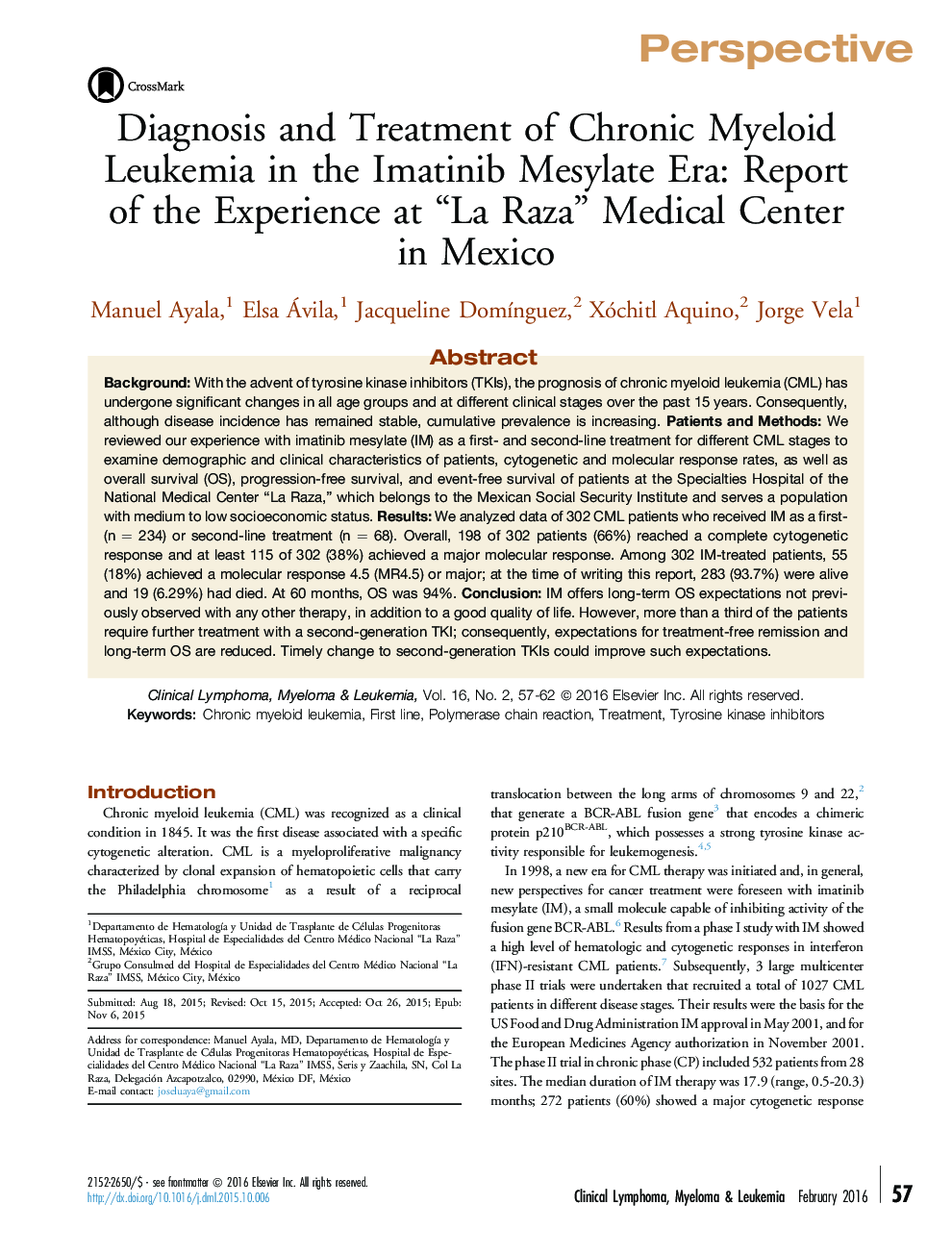| Article ID | Journal | Published Year | Pages | File Type |
|---|---|---|---|---|
| 2754288 | Clinical Lymphoma Myeloma and Leukemia | 2016 | 6 Pages |
BackgroundWith the advent of tyrosine kinase inhibitors (TKIs), the prognosis of chronic myeloid leukemia (CML) has undergone significant changes in all age groups and at different clinical stages over the past 15 years. Consequently, although disease incidence has remained stable, cumulative prevalence is increasing.Patients and MethodsWe reviewed our experience with imatinib mesylate (IM) as a first- and second-line treatment for different CML stages to examine demographic and clinical characteristics of patients, cytogenetic and molecular response rates, as well as overall survival (OS), progression-free survival, and event-free survival of patients at the Specialties Hospital of the National Medical Center “La Raza,” which belongs to the Mexican Social Security Institute and serves a population with medium to low socioeconomic status.ResultsWe analyzed data of 302 CML patients who received IM as a first- (n = 234) or second-line treatment (n = 68). Overall, 198 of 302 patients (66%) reached a complete cytogenetic response and at least 115 of 302 (38%) achieved a major molecular response. Among 302 IM-treated patients, 55 (18%) achieved a molecular response 4.5 (MR4.5) or major; at the time of writing this report, 283 (93.7%) were alive and 19 (6.29%) had died. At 60 months, OS was 94%.ConclusionIM offers long-term OS expectations not previously observed with any other therapy, in addition to a good quality of life. However, more than a third of the patients require further treatment with a second-generation TKI; consequently, expectations for treatment-free remission and long-term OS are reduced. Timely change to second-generation TKIs could improve such expectations.
